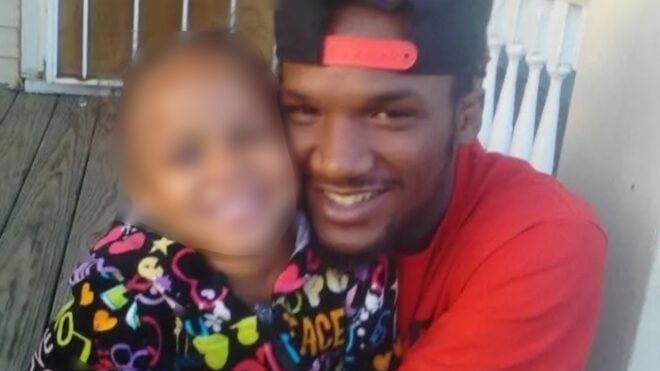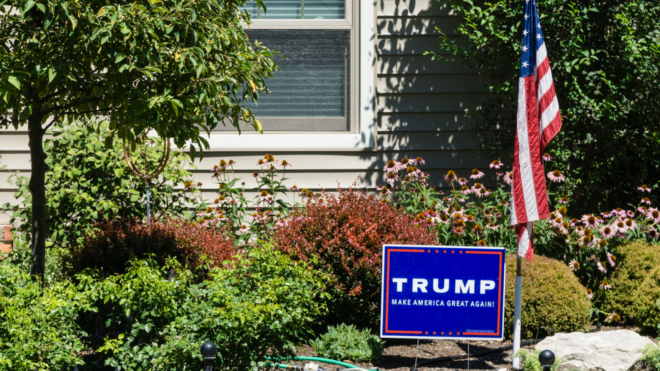Paul Koudounaris has made a career out of photographing some of the world's most intricately designed final resting places.
Dubbed "Indiana Bones," Koudounaris specializes in photographing skeletal reliquaries, mummies, cemeteries, and other macabre things. While most people have a tendency to turn away and try to ignore these facts, Koudounaris does the complete opposite and photographs these wonderful pieces of art for posterity.
The below photographs of these "Catacomb Saints," as they are called, come from Koudounaris' book, Heavenly Bodies.
These corpses were exhumed from the catacombs of Rome in the mid-1500s; countless skeletons were found. The Catholic Church assumed that they must be early Christian martyrs, so they gave them the names of various saints and got to decorating! Many of these wonderful skeletons were distributed all across Europe, and many ended up in Germany as replacements for the numerous holy relics which had been destroyed during the violent Protestant Reformation.
Some of these beautifully macabre skeletons took up to five years to decorate in golds, silvers, and numerous gemstones. Though they were all assumed to be holy Christian saints, many have since been stripped of that honor, because none have been officially canonized by the church. That certainly doesn't make them any less beautiful, though!
Koudounaris has another book about to be released, Memento Mori: The Dead Among Us, which is "the astonishing story of how the dead live on in memorials and traditions across the globe." Make sure to order it if you're interested or if you think it would make a great gift for a friend!
Would you want to be decorated like this?
Please SHARE these beautiful photographs with all of your friends on Facebook!
St. Valerius (Weyarn, Germany)
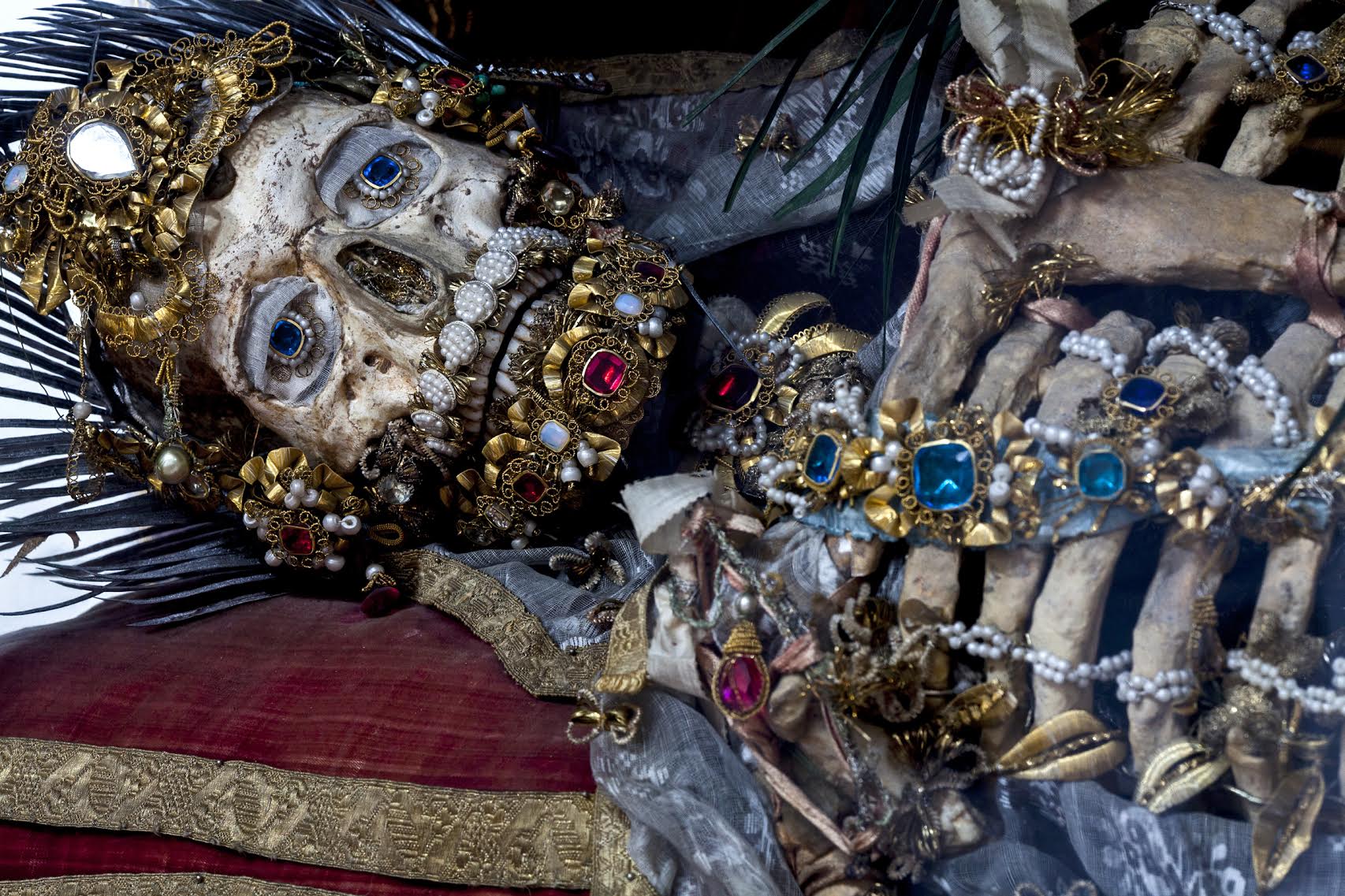
It is reported that the decoration of this particular Saint is incomplete! Still looks beautiful to me though…
St. Maximus (Burglen, Switzerland)
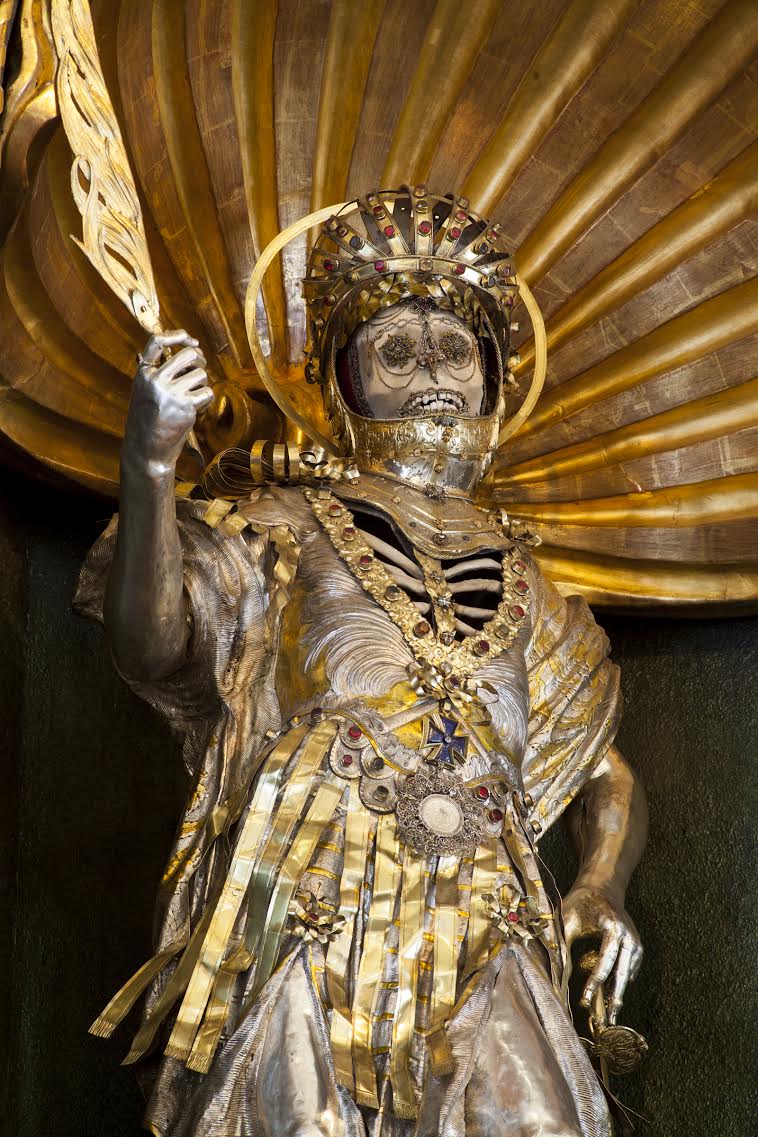
This beautiful skeleton was presumed to be an early Christian martyr. To this day, he still stands tall atop the high altar. Only two fully armored skeletons remain standing in Swiss churches.
St. Coronatus (Heiligkreuztal, Germany)
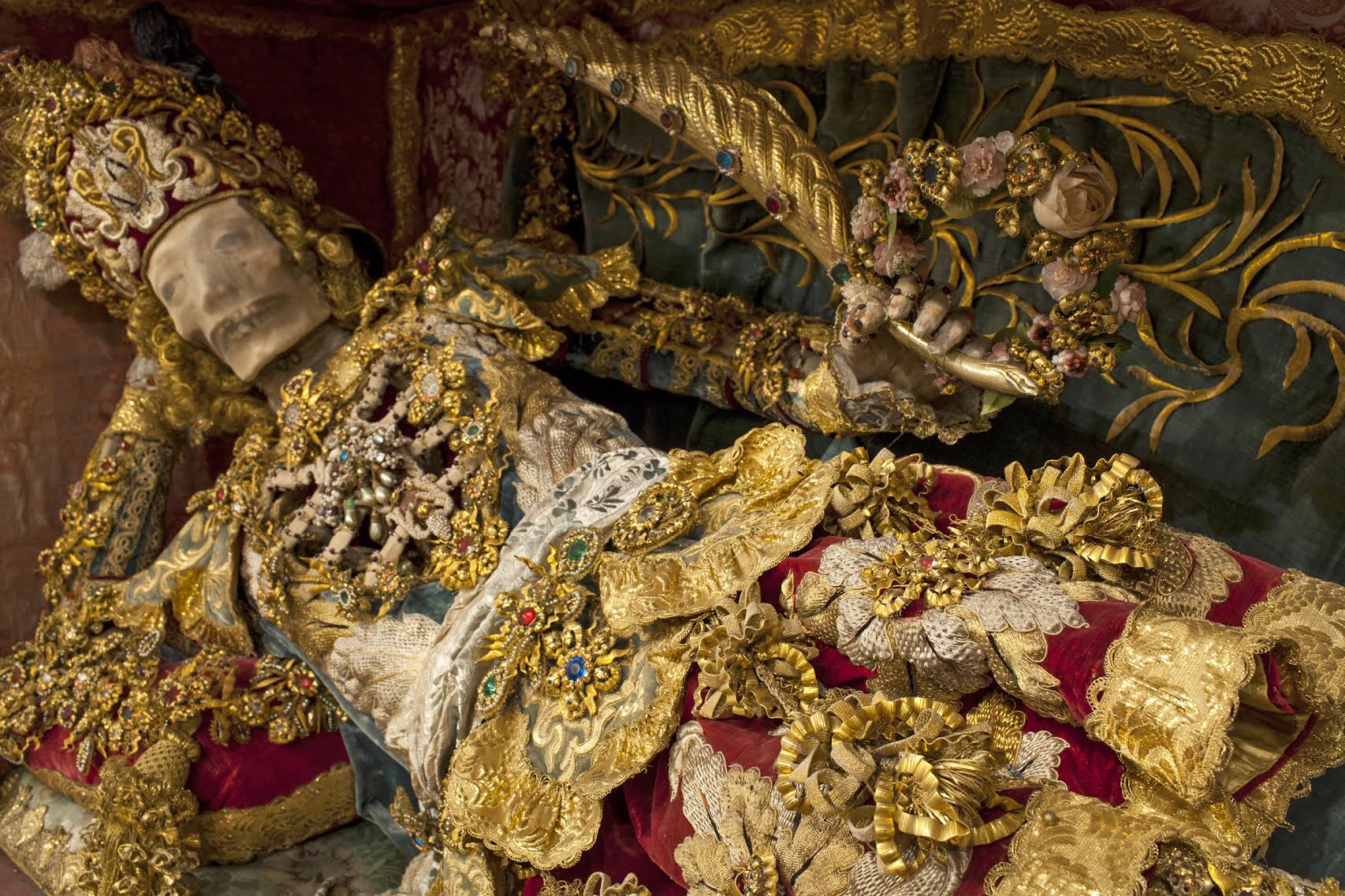
In the third century, a harsh governor was persecuting Christians, forcing them to go into hiding. St. Coronatus volunteered to appear before the governor, at which point he was tortured to death for his belief in Christ.
St. Benedictus (Hergiswil, Switzerland)
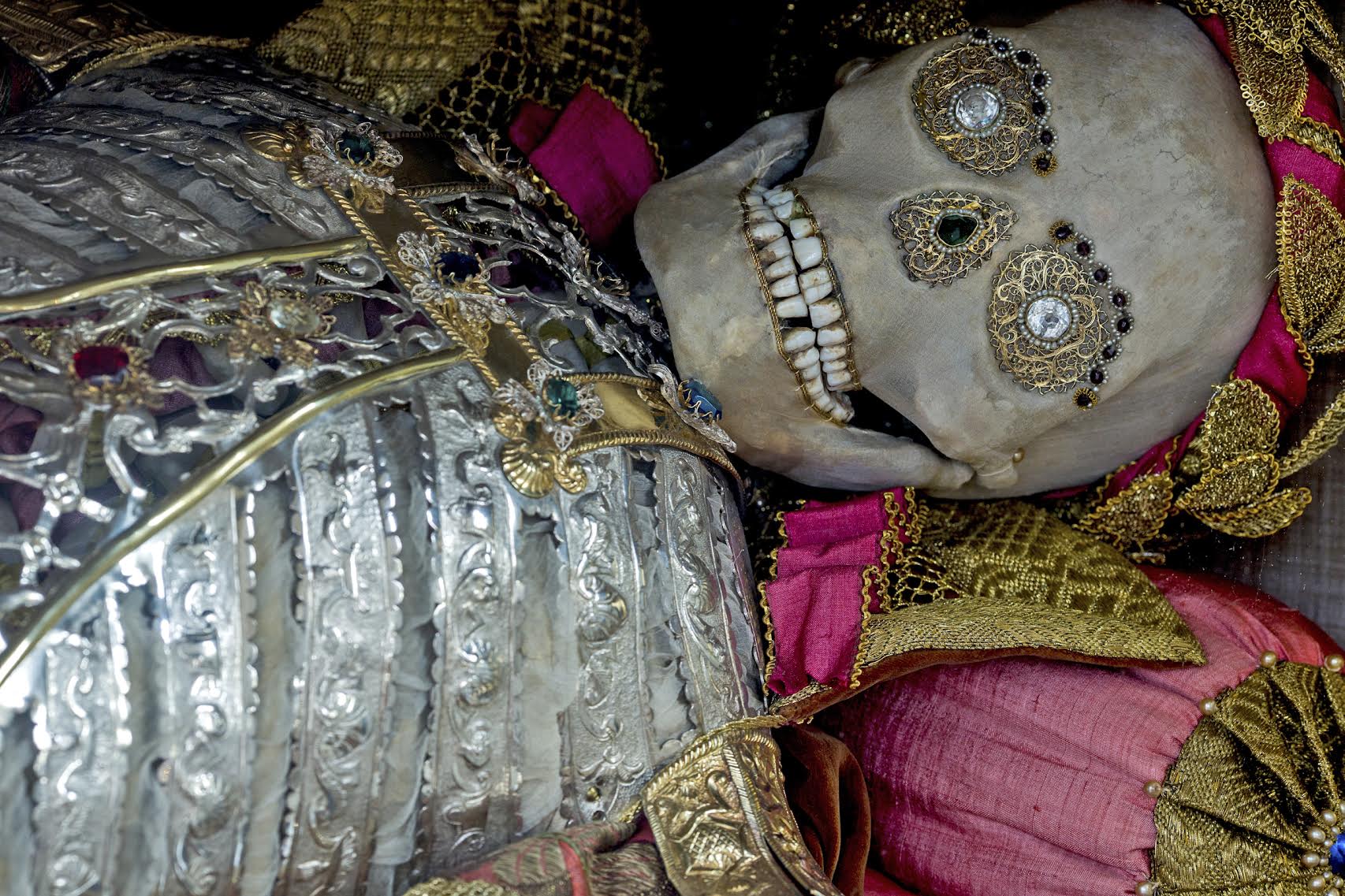
A surprisingly large number of old European churches have these hidden catacombs.
St. Valentinus (Waldsassen, Germany)
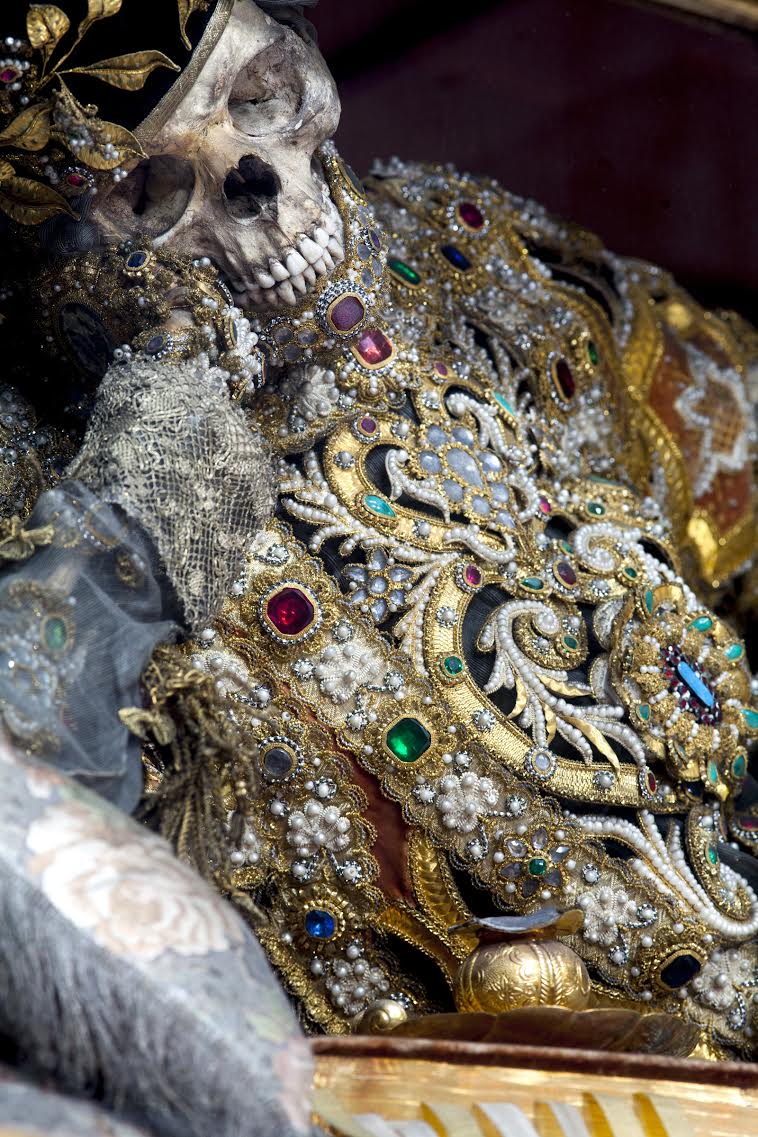
To emphasize his ecclesiastical status, this saint was shown wearing elaborate jewelry that took hours and hours of work to complete.
St. Benedictus (Muri, Switzerland)
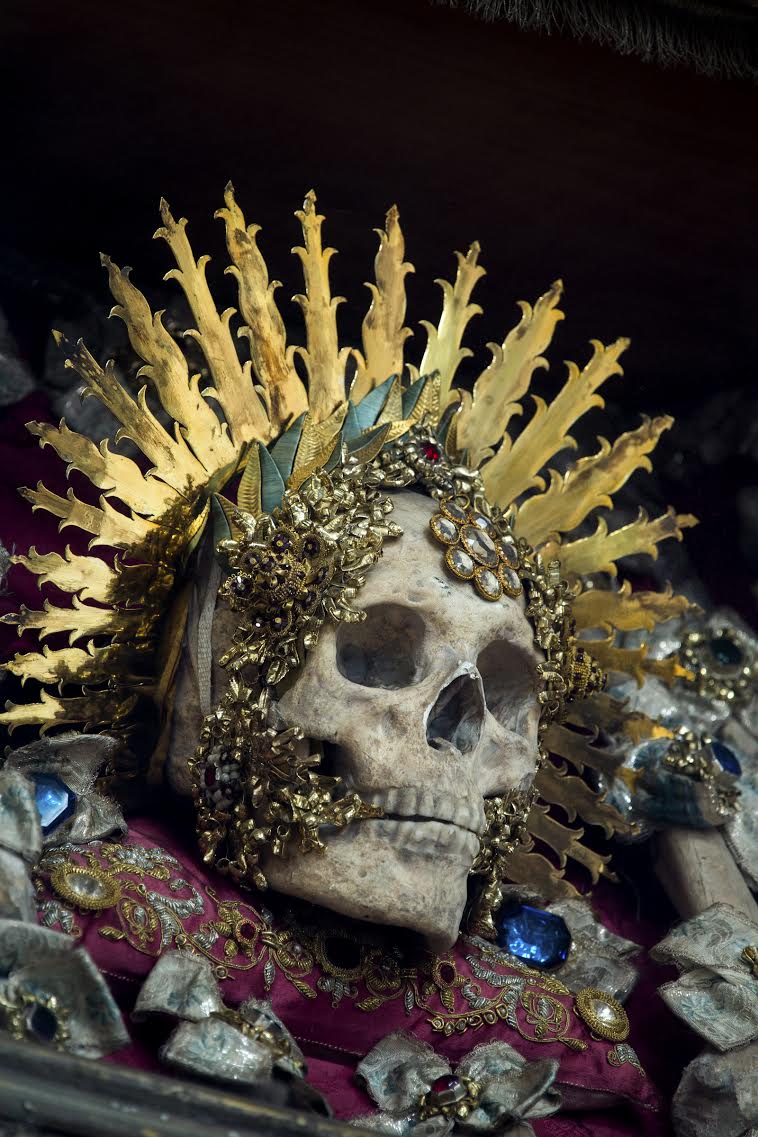
The NEXT group of skeletons looks so weird — they're all all laying down! What do you think: is it creepy or beautiful?
St. Maximus (Waldsassen, Germany)
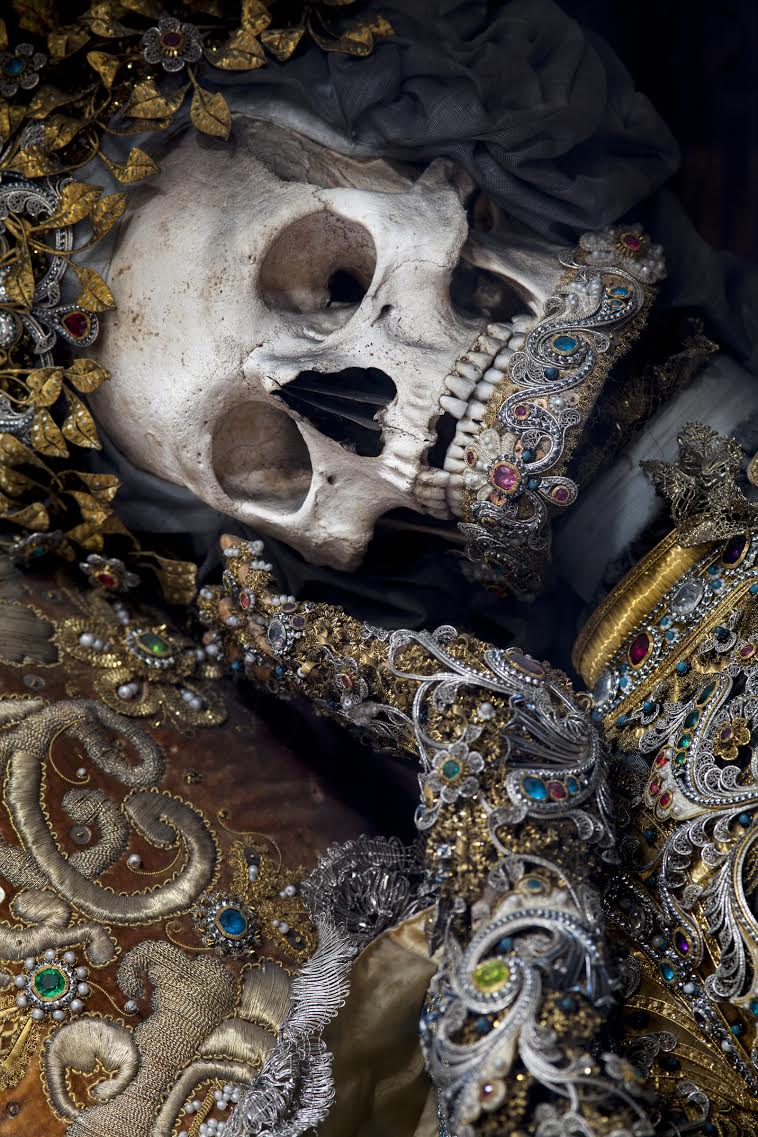
An Asian merchant living in Rome, Maximus was ordered to make a sacrifice to pagan gods, but he refused to do so. He was thus tortured to death for his religious beliefs.
St. Albertus (Burgrain, Germany)
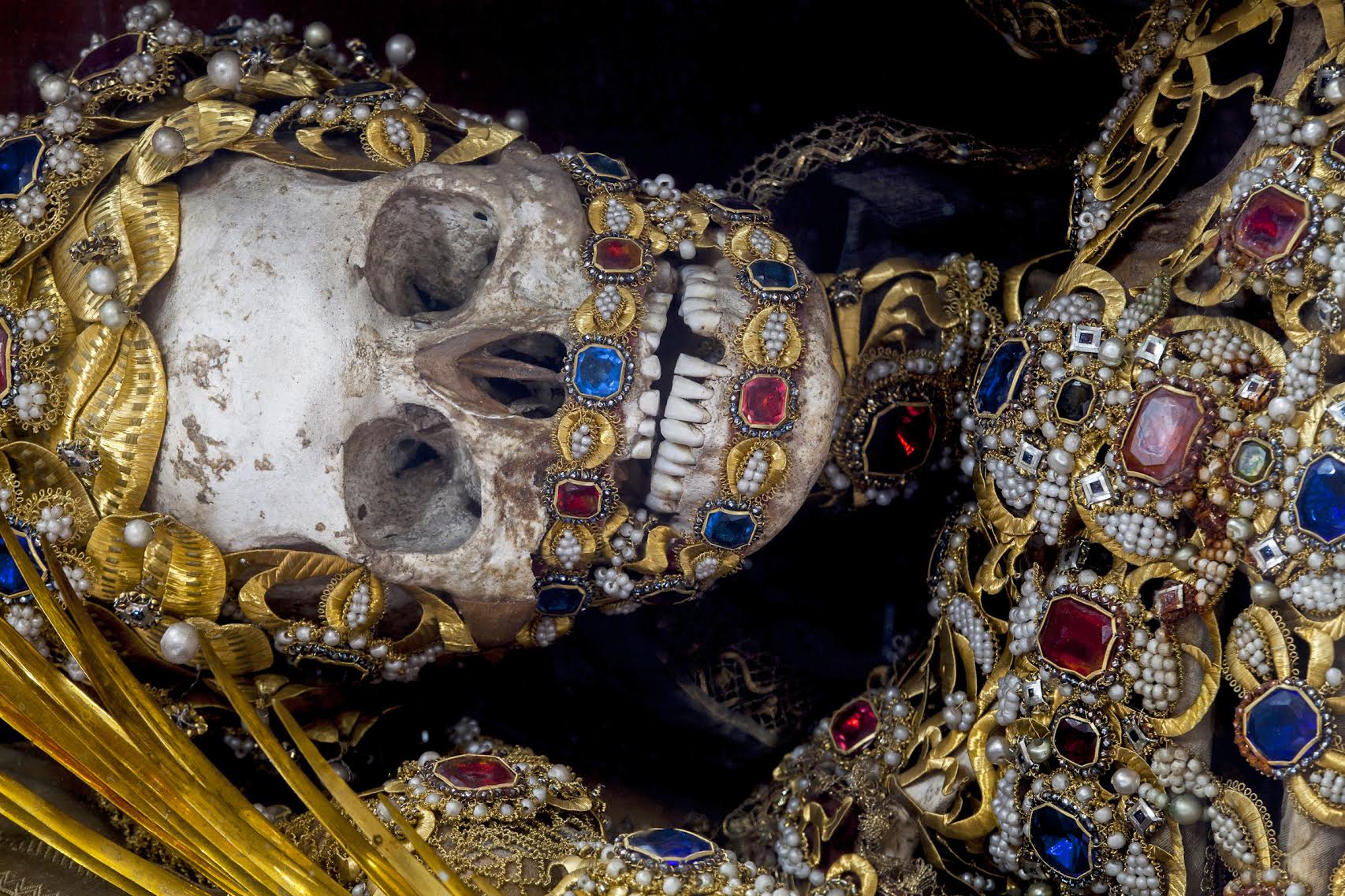
Albertus was known to follow the laws of alchemy. Legend has it that this saint discovered the philosopher's stone, which allows humans to transmute worthless metals into pure gold!
St. Constantious (Rorschach, Switzerland)
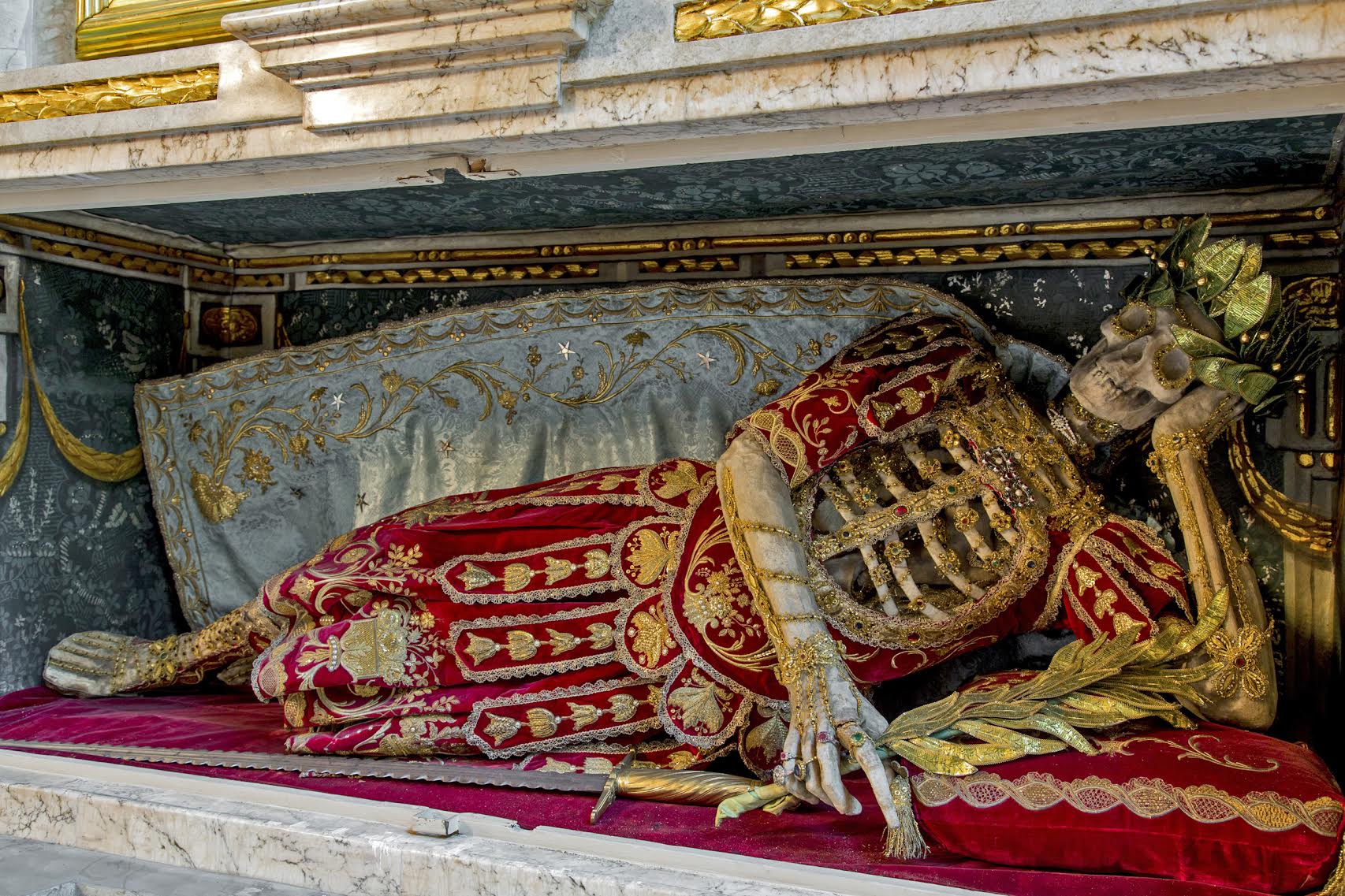
It is said that this saint was forced into a large oven to be burned alive but he surprised his captors when he emerged unscathed. He was eventually caught again and beheaded for his Christian beliefs!
St. Vincentus (Stams, Austria)
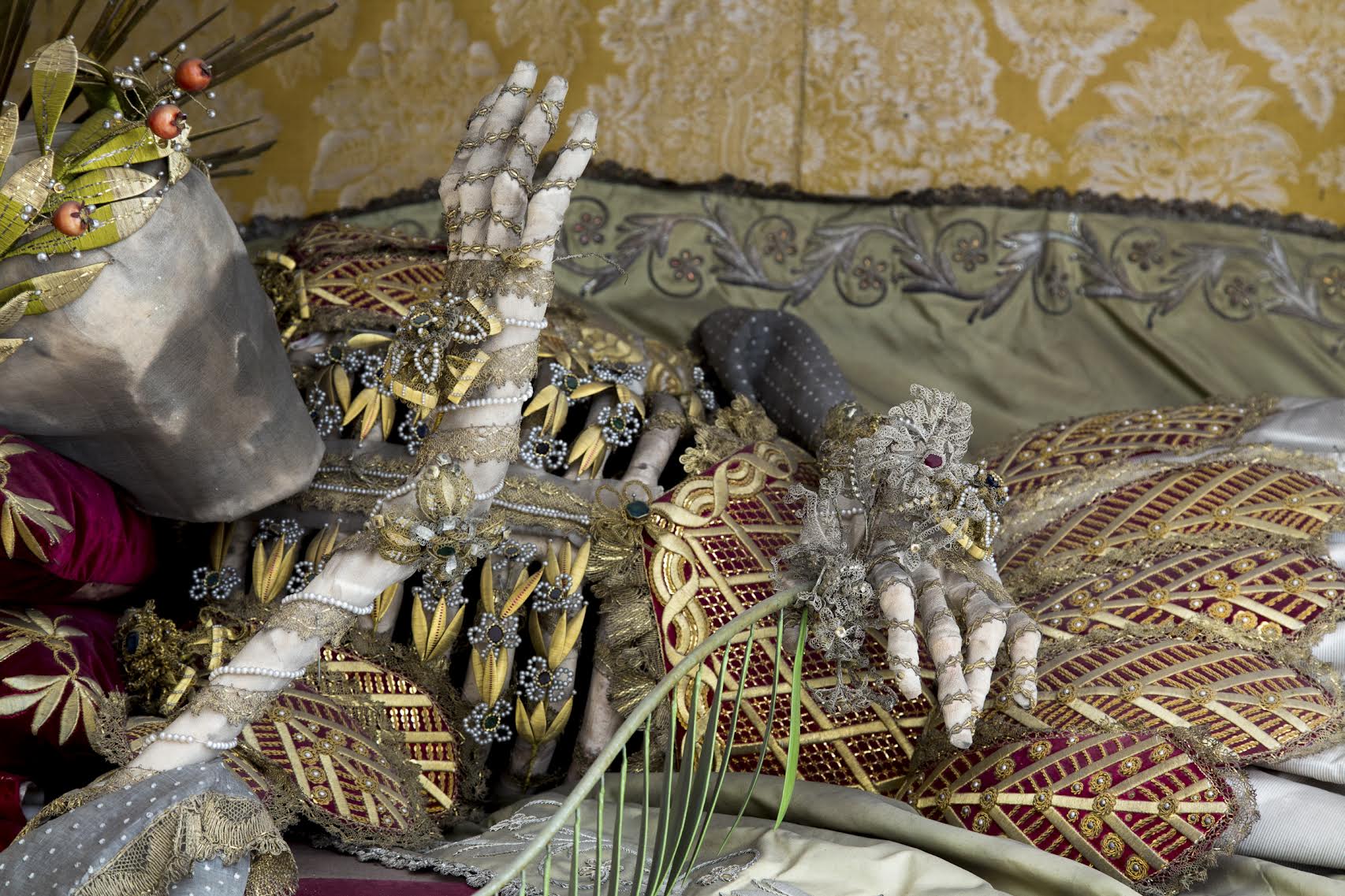
The golden leaves are so intricately designed — this truly took the work of a master. You have to love that touch of having the dead man hold the living frond.
St. Friedrich (Melk, Austria)
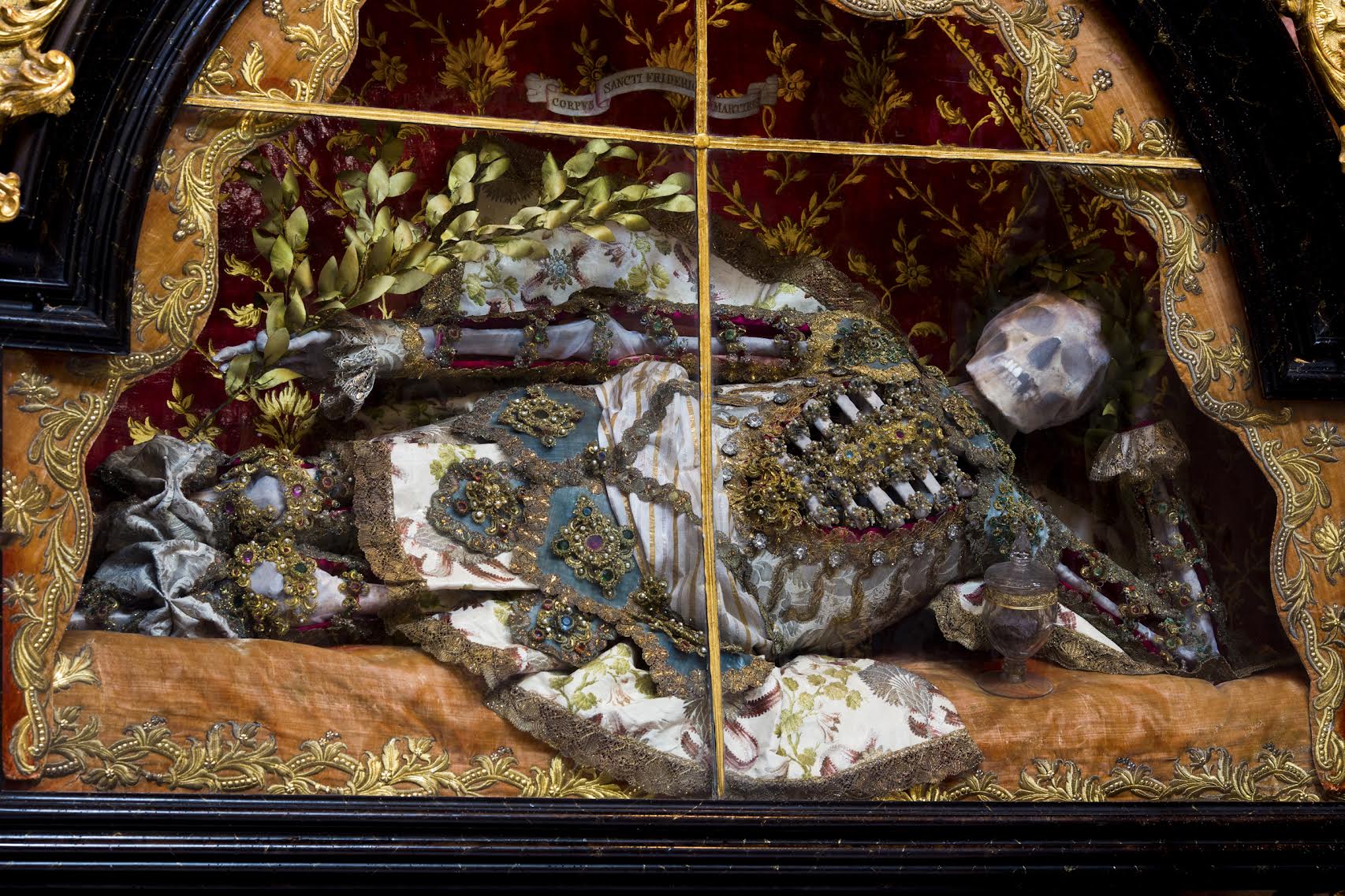
This skeleton was a gift from the Empress Maria Theresa. Since it was believed to be an Early Christian martyr, the name must be a fabrication.
St. Felix (Gars am Inn, Germany)
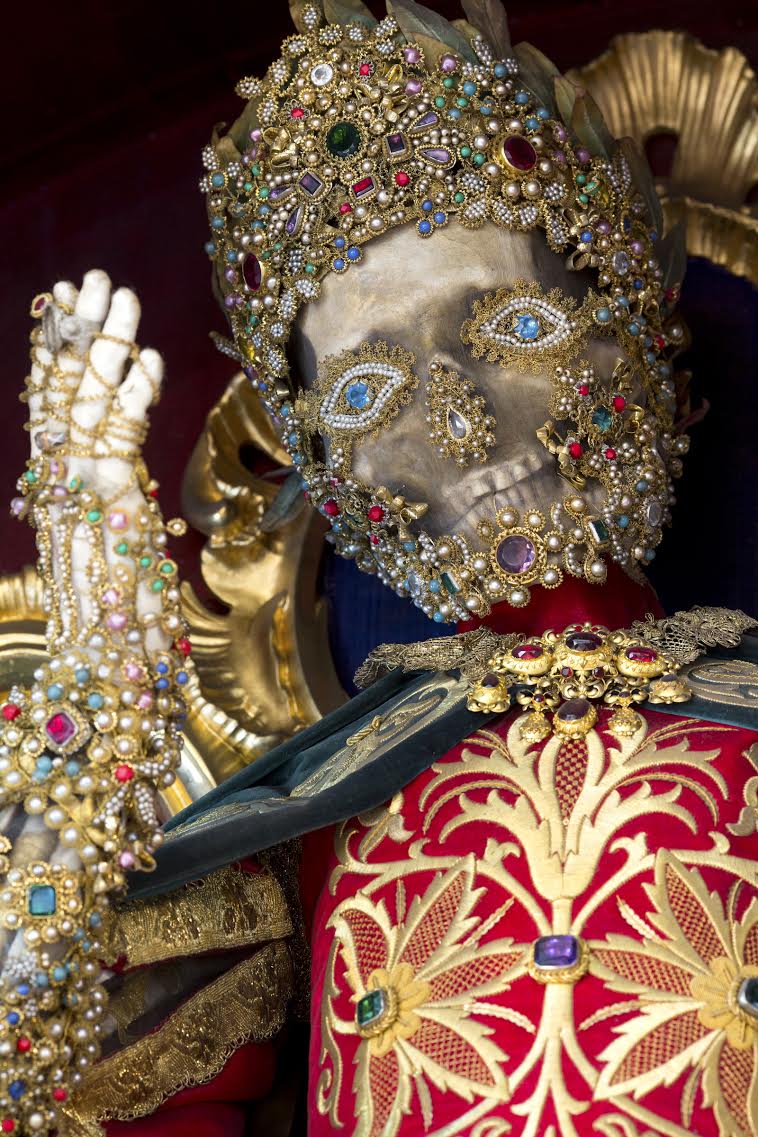
Please SHARE these beautiful pieces with your friends!

